This article was medically reviewed by Cristian Macau, DDS. Dr. Macau is an oral surgeon, periodontist, and aesthetician at Favero Dental Clinic in London. He received his DDS from Carol Davila University of Medicine in 2015.
There are 9 references cited in this article, which can be found at the bottom of the page.
wikiHow marks an article as reader-approved once it receives enough positive feedback. In this case, 89% of readers who voted found the article helpful, earning it our reader-approved status.
This article has been viewed 135,461 times.
A root canal is the cavity within the center of your tooth. The pulp or pulp chamber is the soft area within that root canal and it contains the tooth's nerve. A root canal procedure is a treatment used to repair and preserve a tooth whose pulp or pulp chamber is affected by decay, trauma or any other factors that cause inflammation and could lead to infection. The procedure removes the pulp, which contains the nerve and blood vessels, and the inside of the tooth is cleaned and sealed.
Steps
Understanding the Procedure
-
1Learn why the pulp needs to be removed. When the pulp in your tooth becomes damaged, bacteria and other decayed debris can build up in the damaged area of the tooth and cause an infection or abscess.[1] An abscess occurs when the infection spreads all the way past the ends of the roots of the tooth, affecting the bone. In addition to an abscess, an infection in the root canal of a tooth can cause:
- Facial swelling
- Swelling of the head or neck
- Bone loss at the tooth root
- Drainage problems
- Damage to the jawbone which could require extensive surgery.
- Oral bacterial infections have been linked to more serious medical conditions such as heart disease, such as endocarditis.
-
2Become knowledgeable about the process. This includes the following steps:[2]
- After an x-ray reveals the shape of the root canals to determine if there are any signs of infection in the surrounding bone, you will be fitted with a rubber dam (a sheet of rubber) around the tooth.[3] This keeps the area dry and free of saliva during treatment, preventing bacteria from reaching the area.
- Your dentist or dental surgeon will drill an access hole into the tooth. They will then remove the pulp, bacteria, debris, and any decayed or remaining nerve tissue using a root canal file. They will periodically use water or sodium hypochlorite to flush away the debris and disinfect the roots.
- After the cleaning process is complete, your dentist will apply a sealant. If there is an infection, your dentist may wait up to a week, sometimes two, to apply the sealant. If you do not have the root canal on the same day, the dentist will place a temporary filling in the hole to protect it from contamination until your root canal.
- At the root canal appointment, your dentist or dental surgeon will seal the interior of the tooth with a sealer paste and fill the tooth’s root canal with a rubber compound called Gutta-percha. They will also place a filling in the tooth to seal the hole that has been made by the decay. This prevents the future infiltration of bacteria. The filling is the most important aspect of a long-lasting root canal treatment.
Advertisement -
3Kill any lingering bacteria after the dentist places the filling. An antibiotic will most likely be prescribed to either treat the previous infection or prevent a new one.
-
4Fit a new crown on your tooth to finish out the procedure. A tooth that has had a root canal is no longer living and its enamel will become brittle. Because of this, your dentist will protect it with a crown, crown and post, or other type of dental restoration.
Preparing for Your Root Canal
-
1Do not make a rash decision. If you are in the dentist’s chair for another procedure and they recommend you get a root canal and that you can or should do it right then — don’t. Never make a decision under duress unless absolutely necessary. Tell your dentist you’d like to discuss it either after your current appointment or at a later date after you’ve had time to think about and research the procedure.[4]
- There may be some cases when there is no other solution, especially if you have been in pain for several days, and you will not want to postpone treatment.
-
2Ask questions. Once you’ve had time to think and do research, nothing can give you more peace of mind during and after a root canal than knowing exactly how your dentist views the procedure and what they plan on doing. Have your questions ready and have them answered before you’re sitting in the dentist’s chair. Questions can include a wide variety of topics, such as:[5]
- Is the procedure absolutely necessary?
- Can the tooth recover without a root canal procedure?
- Should you (the dentist) do this procedure, or should I have a specialist do it?
- How many appointments will I need to make?
- Will I be able to return to work that day? The next day?
- How much will it cost?
- What will happen if I don’t get a root canal? Will the infection spread? Will my tooth break?
- How urgent is my situation? Can it wait a month? Does it need to be done immediately?
- Are there alternate methods currently available to fix/heal my tooth?
- What happens if the bacteria is not 100% removed before the tooth is sealed?
-
3Tell your dentist you are nervous about the procedure. If the pain scares you, be honest and upfront about it. Their office and assistants can make the experience as positive and comforting as possible
-
4Explore sedation options. It’s possible that your anxiety at the thought of going to the dentist can be more severe than just being uncomfortable or nervousness. If you suffer from a more acute anxiety, there are four types of sedation used by dentists today to help ease or eliminate that condition. In three cases, these methods also require a local anesthetic to provide pain relief during the procedure. The types of sedation are:[6]
- Oral sedatives. These can be taken anywhere from the night before the procedure to 30 – 60 minutes prior. These are to relieve anxiety prior to an injection of local anesthetic to alleviate pain.
- Intravenous (IV) sedation. These relieve anxiety in the same way as an oral sedative. An injection of local anesthetic before the procedure is required to alleviate pain.
- Nitrous oxide sedation. This gas (aka laughing gas) is a conscious inhalation sedation that produces a state of relaxation. An injection of local anesthetic is given simultaneously for pain elimination.
- General anesthesia. This is the use of an anesthetic to produce unconsciousness. There is no need for a local anesthetic as the patient is unconscious.
Undergoing the Procedure
-
1Inform your dentist if you feel any pain. During the procedure you shouldn’t feel any pain. If you feel even an inkling, even a twinge, let your dentist know and they will adjust the local anesthetic to put that pain to rest immediately. Modern dentistry has eliminated almost all pain from the equation altogether.
- You may feel a short impulse when the file passes through the end of the root in the bone. That's the sign that the entire root canal was cleaned and your dentist can calculate exactly the length of the root.
-
2Practice meditation. You will have your mouth open for several hours so you’ll need to occupy your mind during that time. If you’re good at meditating already you will also get the added benefit of not really feeling anything that’s happening.[7]
- Try guided imagery meditation. Picturing yourself in a peaceful setting is a great form of meditating for the dentist’s chair. Imagine a quiet and motionless place, such as a deserted beach or mountaintop. Fill in all of the details: the sights, sounds, and smells. Soon enough, this peaceful image will replace the world around you and leave you feeling relaxed and refreshed.
- Deep breathing exercises are another great way to meditate and take your mind off of your current location/situation.
- Some dentists also use hypnosis as a form of patient relaxation, though this does not work for everyone.
-
3Bring your electronics. Listening to music is a great way to take your mind off of the procedure. Your favorite tunes on a playlist will keep your attention occupied.[8]
- An audio book of a favorite author can pass the time in a hurry. You can also choose to learn about a subject you’ve always wanted to investigate but have never gotten around to. You have a few hours; you might as well make the most of it.
- Listening to your favorite podcasts is another great way to keep your mind occupied.
-
4Be ready for numbness. The local anesthetic — assuming you do not opt for general anesthesia — will be potent. It will keep the area numb not only during the procedure but also for many hours afterward. Be cautious about chewing because you could actually bite your own tongue or cheek and not even know it.
- Local anesthetics can affect each of us differently. Be aware of your physical condition before you decide to operate a vehicle or take an important business meeting.
- Make sure you also eat something before you arrive at the dental office, as local anesthesia might case nausea if your stomach is empty.
-
5Know that soreness is normal. Your tooth may be sore for two to three days after the procedure, but it’s also normal to have no soreness at all.[9] Your tooth is likely to be more painful if you had a significant infection or inflammation prior to the root canal.
-
6Monitor your pain post-procedure. There might be some pain but it should not be severe, particularly after 24-hours. If you have lingering pain of any severity you should immediately contact your dentist or endodontist as this could be a sign of a bigger post-operative issue.[10]
-
7Avoid chewing on the affected side until your crown is in place. You can take over-the-counter pain relievers or anti-inflammatories to ease the discomfort.[11]
-
8Be aware your procedure may be stopped. A root canal, just like any other medical procedure, has red flags that can put a halt to the proceedings. Your dentist may find during the procedure that it is either unwise or unsafe to continue with your root canal. The reasons may vary, but they more than likely will be among the following:[12]
- One of the dental instruments breaks off in your tooth.
- Your root canal is calcified. This is a “natural root canal”, your body’s way of performing the procedure on its own.
- A fractured tooth. This makes it impossible to complete the procedure because the fracture will compromise the integrity of the tooth even after your root canal is finished.
- If the root of your tooth is curved it could be impossible to guarantee being able to clean all the way to the tip of the root. Since the entire canal must be cleaned, this is an untenable situation and the procedure needs to be halted.
- Should this happen, discuss what your options are moving forward and, as before, take a day or two to research and consider the alternatives before speaking with your dentist or endodontist about the next step.
Expert Q&A
-
QuestionAre root canals painful?
 Alina Lane, DDSDr. Alina Lane is a Dentist who runs All Smiles Dentistry, a general practice dental office based in New York City. After completing a DDS at the University of Maryland, Dr. Lane completed a year-long clerkship in Implantology at the University of Maryland, where she focused on the advanced restoration of dental implants. She continued her advanced education by completing a General Practice Residency at Woodhull Medical Center, an affiliate of the NYU School of Medicine. She received the Woodhull Medical Center Resident of the Year 2012-2013.
Alina Lane, DDSDr. Alina Lane is a Dentist who runs All Smiles Dentistry, a general practice dental office based in New York City. After completing a DDS at the University of Maryland, Dr. Lane completed a year-long clerkship in Implantology at the University of Maryland, where she focused on the advanced restoration of dental implants. She continued her advanced education by completing a General Practice Residency at Woodhull Medical Center, an affiliate of the NYU School of Medicine. She received the Woodhull Medical Center Resident of the Year 2012-2013.
Board Certified Dentist Root canals have a bad reputation, however often it is just hype! Many root canal treatments are relatively painless, especially with today's modern techniques and local anesthesia.
Root canals have a bad reputation, however often it is just hype! Many root canal treatments are relatively painless, especially with today's modern techniques and local anesthesia. -
QuestionAfter the root canal, how bad is the soreness and how long does it last?
 Cristian Macau, DDSDr. Macau is an oral surgeon, periodontist, and aesthetician at Favero Dental Clinic in London. He received his DDS from Carol Davila University of Medicine in 2015.
Cristian Macau, DDSDr. Macau is an oral surgeon, periodontist, and aesthetician at Favero Dental Clinic in London. He received his DDS from Carol Davila University of Medicine in 2015.
Doctor of Dental Surgery There are many factors involved in the amount of soreness you feel after treatment. In most cases patients feel a slight discomfort that goes away in two days. If the infection is widely spread in the bone then over-the-counter pain relievers will be able to east the pain, which shouldn’t last longer than four to six days.
There are many factors involved in the amount of soreness you feel after treatment. In most cases patients feel a slight discomfort that goes away in two days. If the infection is widely spread in the bone then over-the-counter pain relievers will be able to east the pain, which shouldn’t last longer than four to six days. -
QuestionAfter the anesthetic wears off how bad does it hurt and how long?
 Cristian Macau, DDSDr. Macau is an oral surgeon, periodontist, and aesthetician at Favero Dental Clinic in London. He received his DDS from Carol Davila University of Medicine in 2015.
Cristian Macau, DDSDr. Macau is an oral surgeon, periodontist, and aesthetician at Favero Dental Clinic in London. He received his DDS from Carol Davila University of Medicine in 2015.
Doctor of Dental Surgery There is a good chance you won't feel anything. Pain is the result of the medication that gets in touch with infection if the root canal is correctly done and there are no other irritating factors. If there is any pain this should calm down in maximum one week.
There is a good chance you won't feel anything. Pain is the result of the medication that gets in touch with infection if the root canal is correctly done and there are no other irritating factors. If there is any pain this should calm down in maximum one week.
Warnings
- If an infected or injured tooth that needs root canal treatment is ignored, not only can you lose the tooth, but also the infection can spread to other parts of your body.⧼thumbs_response⧽
References
- ↑ https://www.aae.org/patients/root-canal-treatment/what-is-a-root-canal/
- ↑ http://www.deardoctor.com/articles/root-canal-treatment-step-by-step/page2.php
- ↑ https://www.aae.org/patients/root-canal-treatment/what-is-a-root-canal/root-canal-explained/
- ↑ http://askthedentist.com/root-canals-know-before-you-go/
- ↑ http://www.askthedentist.com/root-canals-know-before-you-go/
- ↑ https://www.uesendodontists.com/sedation-dentistry-for-root-canal/
- ↑ http://psychcentral.com/lib/relaxation-and-meditation-techniques/
- ↑ http://www.zoedental.com/10-ways-relax-asheville-dentists-chair
- ↑ https://my.clevelandclinic.org/health/treatments/21759-root-canal
About This Article
A root canal can be a nerve-wracking experience, but you can endure it by occupying your mind through meditation. As you sit in the dentist’s chair, picture yourself in a peaceful setting, a quiet and motionless place like a deserted beach or a mountaintop. Use your imagination to fill in all the sights, smells, and sounds in your imagined space and soon enough the peaceful image you create will replace the world around you. If you have trouble meditating, try listening to music or an audiobook to take your mind off of the procedure. You’ll have a few hours so it might be the perfect time to learn about a subject you never got around to or to catch up on a podcast you haven’t listened to in a while. For more advice from our Dental co-author, like how to handle the pain after your root canal, scroll down.

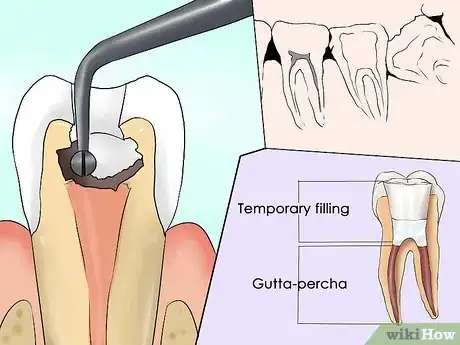





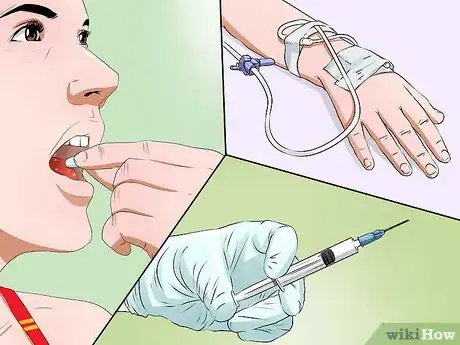

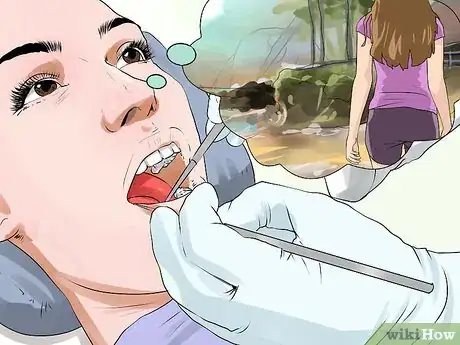
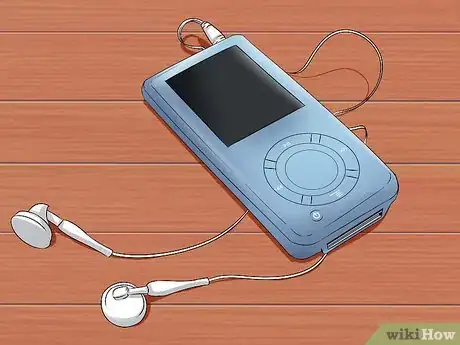

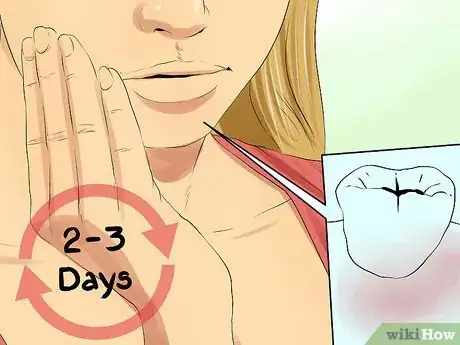


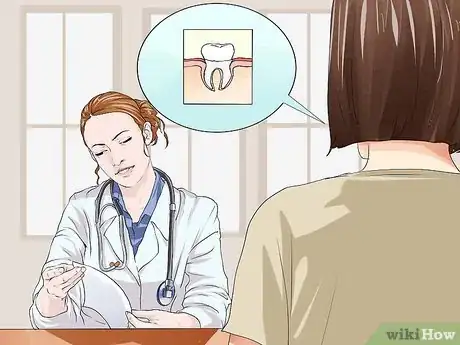



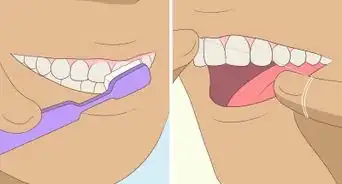
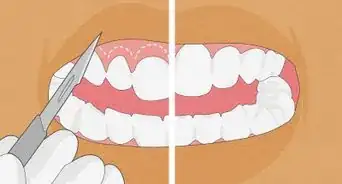




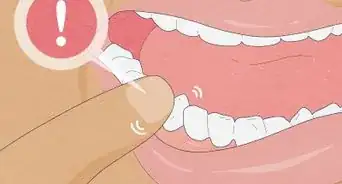
















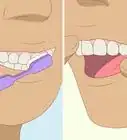



































Medical Disclaimer
The content of this article is not intended to be a substitute for professional medical advice, examination, diagnosis, or treatment. You should always contact your doctor or other qualified healthcare professional before starting, changing, or stopping any kind of health treatment.
Read More...